It has been two years this month since Lin Mun-lee (林曼麗) took over the directorship of the National Palace Museum (國立故宮博物院, NPM). There have been many big shows, but far more importantly, Lin believes she is presiding over a change in direction for Taiwan's, and indeed one of the world's, greatest museums.
"In the last few years, we have introduced many new services that cater to changing public demand," Lin said. "But unless this is reflected in the organizational structure of the museum, then it will only be a flash in the pan. Without a change in legislation, there can be no fundamental change in the nature of the museum."
Lin follows the ideologically controversial Tu Cheng-shen (杜正勝), director from 2000 to 2004, who went on to foment even greater controversy as Minister for Education, and Shih Shou-chien (石守謙), who has been tainted with corruption scandals over the NPM's multi-million dollar renovations.
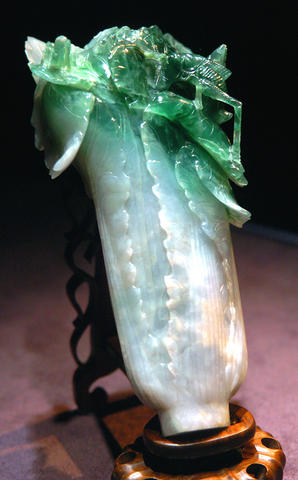
PHOTO: TAIPEI TIMES
She received her higher training at National Tokyo University, returned to Taiwan in 1989 to teach and took up administrative responsibility at what is now the National Taipei University of Education (國立台北教育大學). In 1996 she took over the leadership of the Taipei Fine Arts Museum (台北市立美術館, TFAM), moving to the National Arts and Culture Foundation in 2001 (財團法人國家文化藝術基金會), before becoming deputy director of the NPM in 2004.
Since Lin became director in 2006, she has overseen the reopening of the NPM after extensive renovations, helped push through amendments to the Organic Statute of the National Palace Museum (國立故宮博物院組織條例), and initiated popular developments such as the extension of opening hours on Saturdays. She now faces the enormous challenge of getting the NPM's southern branch up and running.
The renovations gave the museum a much more contemporary look, but the crucial change, according to Lin, is the passing of amendments to the Organic Statute. "When the laws governing the NPM were first drafted around 20 years ago, the whole concept of what a museum did was different. At that time, the focus was on the preservation of historical artifacts, but while this remains important, the emphasis has shifted and museums now have a much broader social mandate."
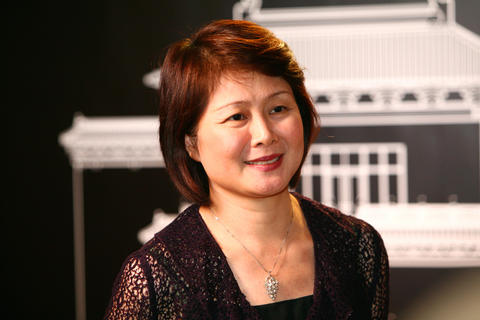
PHOTO: COURTESY OF NPM
After considerable ideological wrangling, the amendments passed their third reading in the Legislature on Dec. 21, 2007. "It was a real effort," Lin said. "I had to make personal appeals to legislators on both sides of the political fence. I sometimes thought it wouldn't be possible. Now, the amendments are in place, the change can continue regardless of who's director (of the NPM)."
The ratification of the amendments means that Lin will now be able to preside over a fundamental shift in NPM policy.
"A modern museum can on longer put an exclusive focus on the exhibits," she said. "The service aspect of the museum has now come to the fore, and you must give museum visitors the feeling that in visiting the museum they have received an outstanding service. There is plenty of space to develop and add value to the exhibits through community and school participation and international exchanges. In the past, this was never emphasized, as the museum lacked both financial and human resources, but with this restructuring, such projects will become possible."
Under the new legislation, departments concerned with the design of exhibitions, marketing and outreach would now command equal status as the technical disciplines of preservation and restoration.
Clearly she is doing something right. Two-and-a-half million visitors passed through the NPM's doors last year, 30 percent more than the previous highest recorded figure. Part of this increase may be due to Lin's insistence on catering to the domestic market as much as tourists. Moves like opening on Saturday evenings and holding concerts, initiated in July 2007 have proved a great success. The first series, tied to the Great Hapsburg Collectors Masterpieces exhibition, brought the music of Viennese cafes to the NPM's lobby and main forecourt.
"It doesn't matter whether people came to listen to the music, or look at the art, the important thing is we have extended our appeal," Lin said.
She is particularly proud of her achievement in introducing these activities because the NPM "didn't use a cent of government money to make the changes."
The director said the NPM is gradually learning to leverage its reputation within the international arts community to attract sponsorship from the private sector. "We want to provide access to art for people without demanding they spend a lot of money," she said. "This is something I regard as being a crucial part of our mandate."
Diplomatic to a fault, Lin's antipathy towards ideological considerations in the presentation of art appears briefly as she talks about the latest challenge. That is establishing the NPM's southern branch, whose mission is to be "a world-class museum of Asian art and culture that will foster a new consciousness of the cultural connections between Taiwan and the rest of Asia and the world beyond."
This is a significant departure from the image of the NPM as the preserver of imperial Chinese heritage. To gear up for this project, NPM researchers and curators are busy at work on a new exhibition to be titled Exploring Asia: Episode One of the NPM Southern Branch (探索亞洲 - 故宮南院首部曲特展), which will open March 25.
"We will … use the artifacts to tell a different story. We have 650,000 artifacts, but many of them have never seen the light of day. This is not because of a lack of space, but due to the effects of a dominant cultural discourse," Lin said. "This discourse has given importance to some objects, while relegating others to obscurity. By taking an Asian rather than Chinese perspective, all that changes, and objects that where previously overlooked in the framework of one discourse, assume a central importance within another."
Lin puts an emphatically practical spin on her reasons for promoting the pan-Asian idea, which from an ideological point of view could be seen as an effort to blur the museum's national and ideological associations. "You want to make the most of what you've got," she said. "There isn't a museum in the world which wouldn't want to do that."
Lin this past week presided over the packing of the NPM's fourth major overseas show, which will see 116 items displayed at the Kunsthistorisches Museum in Vienna. She hopes to see more exchanges such as these in which the NPM can use its formidable reputation to create new and exciting exhibitions.
"For me, art is a fundamental value. I think art is an important value in our life. It is what gives us dignity … . Whether I'm a creative artist or an administrator, my main emphasis is on people. Art needs to link up with the way people live," she said. "Even the most precious things enshrined in the NPM were only made because people had a need to make, use or simply appreciate these things. Art needs to link up with life, and we use art to create our own civilization and our own culture. That is the value of this kind of heritage. "
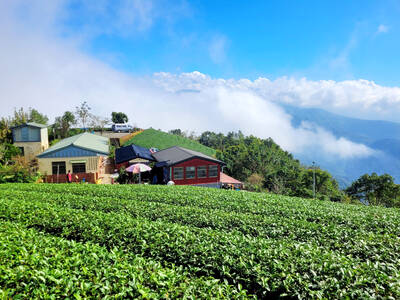
Every now and then, it’s nice to just point somewhere on a map and head out with no plan. In Taiwan, where convenience reigns, food options are plentiful and people are generally friendly and helpful, this type of trip is that much easier to pull off. One day last November, a spur-of-the-moment day hike in the hills of Chiayi County turned into a surprisingly memorable experience that impressed on me once again how fortunate we all are to call this island home. The scenery I walked through that day — a mix of forest and farms reaching up into the clouds
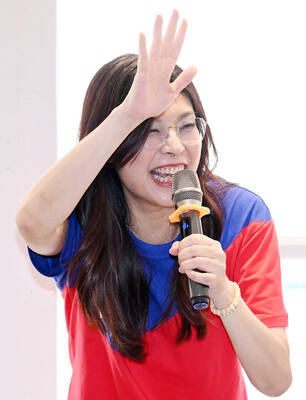
With one week left until election day, the drama is high in the race for the Chinese Nationalist Party (KMT) chair. The race is still potentially wide open between the three frontrunners. The most accurate poll is done by Apollo Survey & Research Co (艾普羅民調公司), which was conducted a week and a half ago with two-thirds of the respondents party members, who are the only ones eligible to vote. For details on the candidates, check the Oct. 4 edition of this column, “A look at the KMT chair candidates” on page 12. The popular frontrunner was 56-year-old Cheng Li-wun (鄭麗文)
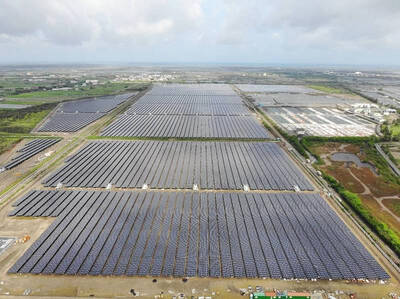
“How China Threatens to Force Taiwan Into a Total Blackout” screamed a Wall Street Journal (WSJ) headline last week, yet another of the endless clickbait examples of the energy threat via blockade that doesn’t exist. Since the headline is recycled, I will recycle the rebuttal: once industrial power demand collapses (there’s a blockade so trade is gone, remember?) “a handful of shops and factories could run for months on coal and renewables, as Ko Yun-ling (柯昀伶) and Chao Chia-wei (趙家緯) pointed out in a piece at Taiwan Insight earlier this year.” Sadly, the existence of these facts will not stop the
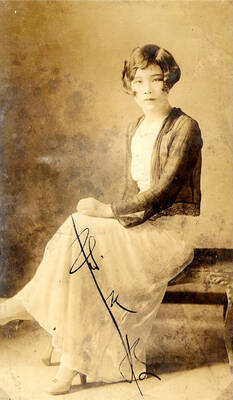
Oct. 13 to Oct. 19 When ordered to resign from her teaching position in June 1928 due to her husband’s anti-colonial activities, Lin Shih-hao (林氏好) refused to back down. The next day, she still showed up at Tainan Second Preschool, where she was warned that she would be fired if she didn’t comply. Lin continued to ignore the orders and was eventually let go without severance — even losing her pay for that month. Rather than despairing, she found a non-government job and even joined her husband Lu Ping-ting’s (盧丙丁) non-violent resistance and labor rights movements. When the government’s 1931 crackdown